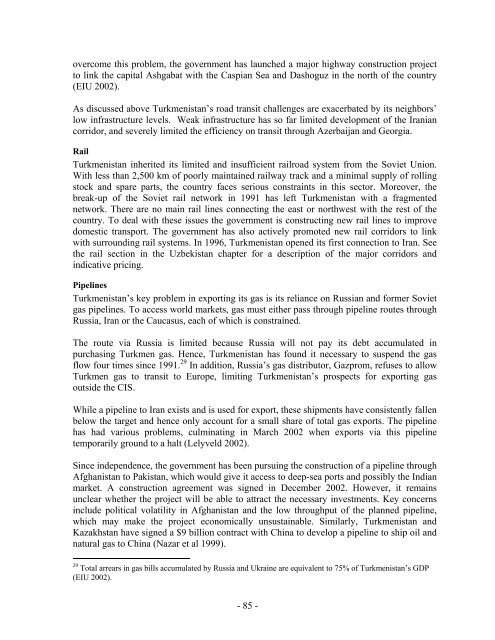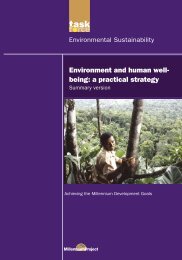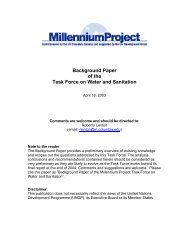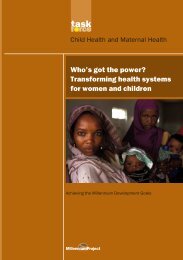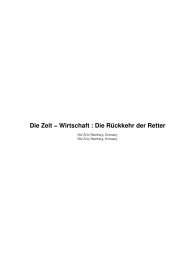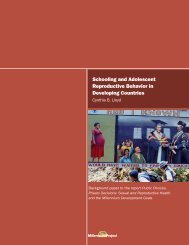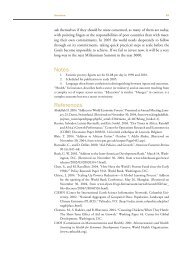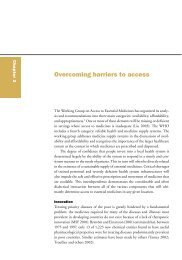the challenges facing landlocked developing countries: a case study ...
the challenges facing landlocked developing countries: a case study ...
the challenges facing landlocked developing countries: a case study ...
You also want an ePaper? Increase the reach of your titles
YUMPU automatically turns print PDFs into web optimized ePapers that Google loves.
overcome this problem, <strong>the</strong> government has launched a major highway construction project<br />
to link <strong>the</strong> capital Ashgabat with <strong>the</strong> Caspian Sea and Dashoguz in <strong>the</strong> north of <strong>the</strong> country<br />
(EIU 2002).<br />
As discussed above Turkmenistan’s road transit <strong>challenges</strong> are exacerbated by its neighbors’<br />
low infrastructure levels. Weak infrastructure has so far limited development of <strong>the</strong> Iranian<br />
corridor, and severely limited <strong>the</strong> efficiency on transit through Azerbaijan and Georgia.<br />
Rail<br />
Turkmenistan inherited its limited and insufficient railroad system from <strong>the</strong> Soviet Union.<br />
With less than 2,500 km of poorly maintained railway track and a minimal supply of rolling<br />
stock and spare parts, <strong>the</strong> country faces serious constraints in this sector. Moreover, <strong>the</strong><br />
break-up of <strong>the</strong> Soviet rail network in 1991 has left Turkmenistan with a fragmented<br />
network. There are no main rail lines connecting <strong>the</strong> east or northwest with <strong>the</strong> rest of <strong>the</strong><br />
country. To deal with <strong>the</strong>se issues <strong>the</strong> government is constructing new rail lines to improve<br />
domestic transport. The government has also actively promoted new rail corridors to link<br />
with surrounding rail systems. In 1996, Turkmenistan opened its first connection to Iran. See<br />
<strong>the</strong> rail section in <strong>the</strong> Uzbekistan chapter for a description of <strong>the</strong> major corridors and<br />
indicative pricing.<br />
Pipelines<br />
Turkmenistan’s key problem in exporting its gas is its reliance on Russian and former Soviet<br />
gas pipelines. To access world markets, gas must ei<strong>the</strong>r pass through pipeline routes through<br />
Russia, Iran or <strong>the</strong> Caucasus, each of which is constrained.<br />
The route via Russia is limited because Russia will not pay its debt accumulated in<br />
purchasing Turkmen gas. Hence, Turkmenistan has found it necessary to suspend <strong>the</strong> gas<br />
flow four times since 1991. 29 In addition, Russia’s gas distributor, Gazprom, refuses to allow<br />
Turkmen gas to transit to Europe, limiting Turkmenistan’s prospects for exporting gas<br />
outside <strong>the</strong> CIS.<br />
While a pipeline to Iran exists and is used for export, <strong>the</strong>se shipments have consistently fallen<br />
below <strong>the</strong> target and hence only account for a small share of total gas exports. The pipeline<br />
has had various problems, culminating in March 2002 when exports via this pipeline<br />
temporarily ground to a halt (Lelyveld 2002).<br />
Since independence, <strong>the</strong> government has been pursuing <strong>the</strong> construction of a pipeline through<br />
Afghanistan to Pakistan, which would give it access to deep-sea ports and possibly <strong>the</strong> Indian<br />
market. A construction agreement was signed in December 2002. However, it remains<br />
unclear whe<strong>the</strong>r <strong>the</strong> project will be able to attract <strong>the</strong> necessary investments. Key concerns<br />
include political volatility in Afghanistan and <strong>the</strong> low throughput of <strong>the</strong> planned pipeline,<br />
which may make <strong>the</strong> project economically unsustainable. Similarly, Turkmenistan and<br />
Kazakhstan have signed a $9 billion contract with China to develop a pipeline to ship oil and<br />
natural gas to China (Nazar et al 1999).<br />
29 Total arrears in gas bills accumulated by Russia and Ukraine are equivalent to 75% of Turkmenistan’s GDP<br />
(EIU 2002).<br />
- 85 -


